Light armored 4x4. Part of 2
Demonstration of patency of the Sherpa Light armored vehicle offered with two different power units
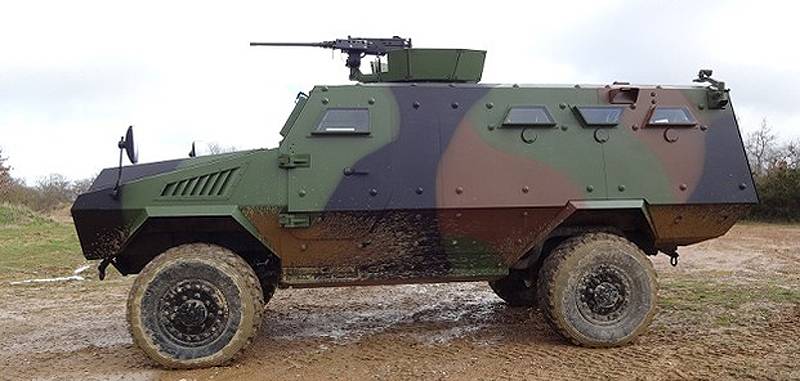
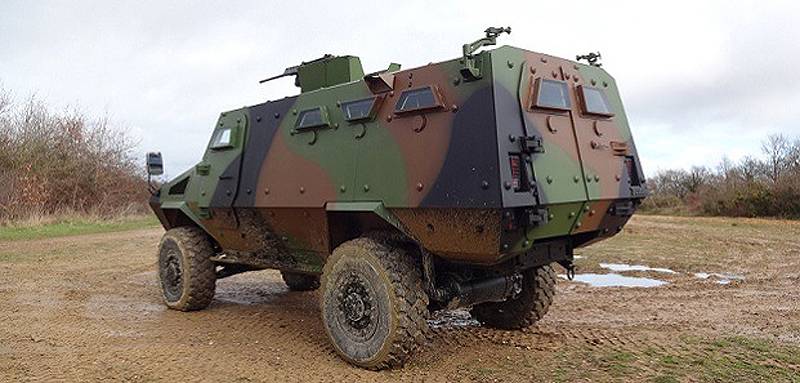
The development of the platform VLRA 2 has led to the emergence of a new Bastion High Mobility armored vehicle, which is based on a modern chassis with enhanced performance.
Let's return to the company Renault Trucks Defense. Her platform, Sherpa Light, gave birth to a whole family of vehicles, which includes the following options: reconnaissance, cargo and cargo, cargo and armored personnel carrier. Their total mass varies from 7,9 to 10,9 tons, while passenger capacity is from two people in the cargo version with a shortened cabin, 4-5 people in reconnaissance and cargo-passenger versions and up to 10 people in the version of an armored personnel carrier. The level of cab protection can be raised to a third, a V-shaped deflector plate is installed under the hull, increasing the level of protection against improvised explosive devices (IEDs); Optionally, the levels of mine protection can be increased to levels that meet European standards CEN ВХNUMX or В6. You can choose from two power units from Renault with 7 or 176 hp. Sherpa Light can be equipped with a remotely controlled weapons module (DUMV), turrets with 240-mm guns, anti-tank guided missile systems. The cargo variant can be used as a mortar or artillery tractor. The Sherpa Light armored vehicle is in service with many countries, both military structures and paramilitary forces.
ASMAT offers the Bastion armored vehicle weighing 12 tons based on the VLRA platform, which in a fully armored version of the armored personnel carrier can receive two crew members plus eight paratroopers. The machine has two side and two rear doors, 9 loopholes are made in the car, which ensures firing at 360 ° and makes it possible to repel the attack of the enemy from ambushes. The machine can be equipped with a support ring for mounting a turret or a remote-controlled turret. The level of body armor corresponds to the second according to the NATO standard STANAG 4569, which can be raised to the third. In September, the US Department of Defense 2015 ordered Mack Defense (local VGGS, see part 1) 62 Bastion armored personnel carrier to supply African countries, including Somalia, Uganda, Tunisia, Cameroon, and Ethiopia. In addition, Burkina Faso, Chad and Mali are armed with Bastion, some unnamed countries in the Middle East have also purchased this machine from ASMAT. Using the VLRA 2 chassis, ASMAT developed Bastion HM (High Mobility), which has a total mass of 14,5 tons and an 340 hp engine. The machine is available in the version of an armored personnel carrier with a passenger capacity of 10 people and in the version of the logistics with a crew of two or three people and a rear cargo platform with a tonnage of 4,5. The new platform is longer and wider than the original Bastion car; it has a fully independent suspension, not bridges with leaf springs like the original version. The anti-mine protection corresponds to the 2 Level / b, the ballistic protection is not reported, but most likely it should also correspond to the 2 Level with the ability to upgrade to at least the 3 Level.
Aravis armored vehicle of the French army in Afghanistan; the machine is equipped with lattice screens to protect against RPGs and silencers to protect against radio-controlled IEDs
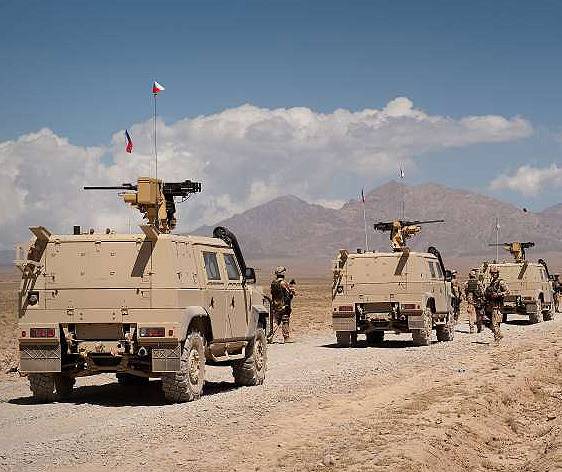
A convoy of LMV vehicles of the Czech Army in Afghanistan. The company has successfully sold these machines to many countries.
Nexter’s Aravis armored vehicle was operated as part of the French contingents in Afghanistan and Mali. The army of Gabon is armed with 12 of such vehicles, which are operated by a contingent deployed in the Central African Republic under a UN mandate. In November last year, the French contingent suffered losses as a result of blowing up the IED, which raised the question of increasing the level of protection for light armored vehicles, such as Aravis, currently used in the engineering units as a component of the aisle clearance system. The fact that the army of Gabon was able to maintain their cars without any support from the manufacturer and other suppliers, the training was quite enough, says about the simplicity and reliability of the machine. Nexter has also completed deliveries to one of the countries in the Middle East, but it is clear that this is Saudi Arabia. The first batch consisted of Aravis 73 machines, some of them were equipped with ARX20 DUMV from Nexter Systems; followed by two more batches with a total of 264 machines. Nexter has also completed training for drivers and technical staff and now Aravis has been adopted by the Saudi National Guard, but its operational assignment is not disclosed. According to Nexter, no new options for Aravis are planned; The main market for this machine are countries outside Europe, including many African countries.
At the end of 90-s, the Italian company Iveco DVD developed a multi-purpose light machine LMV (Light Multirole Vehicle), which was adopted by 13 countries; at the same time the UK became the starting customer in 2003. The largest number of LMV platforms is in service with the Italian army, which received more than 1700 Lince armored vehicles (Lynx) in different versions. Initially, the weight of the machine was 6,5 tons, but the mass of the last version of Lince, proposed for foreign countries, increased to 7,1 tons. Some of the solutions implemented in the latest versions of the LMV were transferred to a new generation armored car, which received the designation Lince 2 in Italy. This machine was developed as part of the Forza NEC Italian Army digitization program, which includes equipping various platforms with new information and control systems. The machine is being developed in accordance with the Forza NEC 4.9 segment, which initially included six prototypes, but later reduced the number of prototypes to two. These two prototypes at the end of 2016, and were delivered to the Italian Ministry of Defense. In addition, Iveco DV manufactured for its tasks three prototypes of the new machine, which were used for the qualification tests of the platform, one of them drove over 20000 km without a single problem.
Compared to the original LMV, the new Lince 2 has a carrying body that provides significantly better protection against explosions along the sides, usually from IEDs. The rearrangement, as well as the use of base armor with higher performance and a slight increase in size, made it possible to increase the internal volume by 13% with the same mass. In addition, due to the double bottom, the level of protection against mines and IEDs was increased. The gross weight of the armored car is 8,1 tons, the chassis was enhanced by the use of SSAB Domex 700 steel with a yield strength of 700 MPa instead of FeE490 steel with a yield strength of 490 MPa. The suspension was also refined to cope with the increased mass. The modified 165 kW engine, coupled with the new eight-speed automatic transmission ZF 8 HP 90S, allowed to save the specific power over 20 kW / t. The refined dual cooling system and the new air filtration system ensured an increase in performance, reliability and ease of operation. The new car has two new systems that have improved its driving characteristics: ADM (Automatic Drivetrain Management) automatic steering control system and Electronic Stability Program (ESP). The first provides automatic locking of differentials, the function is activated when the anti-lock system detects the difference in the speed of rotation of the drive shafts over 300 r / min. With regard to ESP, this system also uses data from the ABS, as well as data from the additional block of inertial deviation measurement and angle sensor. The system actively controls the rotational speed and torque of each wheel, thereby improving the stability of the machine. Most of the increase in mass, and this one ton, went to increase the load capacity from 800 to 1500 kg.
Driving trials of a Survivor-R armored car. The machine in 4x4 configuration is offered by Rheinmetall Vehicle Systems Division for military and paramilitary units
The joint brainchild of KMW and Rheinmetall - the armored Armored Multipurpose Vehicle with enhanced protection - is still waiting for its launch customer
The two mentioned prototypes, delivered to the Ministry of Defense, will be used for qualification tests of command and control points and, therefore, will be equipped with an onboard information management system (BIUS), as well as Hitrole Light DUMVs. In accordance with the Forza NEC program, each Lince 2 machine will become a node of the digital system at the branch level (Т2), platoon (ТЗ) and company (Т4). The qualifications will be held in conjunction with the Leonardo Defense Electronics Division, which is responsible for the information management system, which includes VHF and satellite radio stations, the composition of which depends on the node level. Upon completion of the qualification testing of the platform and control units, a contract for the 34 pre-production machine will be issued, and Iveco DV will receive an order from Leonardo, the lead contractor for the Eorza NEC program; first deliveries are expected at the end of 2017. The Italian army plans to receive the first order in quantities of approximately 400 machines. It will be followed by a multi-year procurement program, which may lead to the delivery of Lince 2000 machines over 2, although experts say the actual number of 1250 machines is in this case almost one to one replacement for the previous version of Lince 1. In the Forza NEC segment of the 4.4 program, the Lince 2 ISTAR reconnaissance variant is further developed. As for the CICS kit, most of it will be based on components for the T4 node. The Janus specific intelligence station on the telescopic mast will be installed at the rear right, which will require the movement of many components of the communication kit. Lince 2 ISTAR will be assigned to reconnaissance regiments, it is planned to manufacture a total of 150-200 machines in this version. As for the RCB exploration option, problems with the budget halted the process of developing it indefinitely.
With two generations of LMV armored vehicles in its portfolio, Iveco DV is looking forward to opening up new export opportunities for those countries that already have their 4x4 car and that could go to the LMV 2 platform, as well as those countries where the original LMV platform can satisfy local requirements.
Rheinmetall MAN Military Vehicles (currently part of the Rheinmetall Vehicle Systems Division) has in its portfolio two armored vehicles in the 4x4 configuration: Survivor-R and AMPV, the last one developed in conjunction with KMW. The 11 ton Survivor-R and 4 ton carrying capacity are based on a modified MAN chassis that can withstand a gross weight of up to 18 tons. The machine is equipped with a diesel engine with power 330 hp, suspension spring with additional hydraulic struts on the front and rear axles. The concept of protection is based on a bearing body of armored steel with a reflective V-shaped sheet. This allows you to achieve the maximum level of ballistic protection that complies with the third one according to the NATO standard STANAG 4569, while mine protection corresponds to the level of 4 / 3b. Armored Car Survivor-R is able to withstand the undermining of IEDs weighing 100 kg at a distance of five meters. The car can accommodate ten people, including 8 paratroopers in the rear compartment. In addition to the personnel transporter option, several other options are also available: commander, ambulance, pickup, as well as specialized vehicles such as reconnaissance and RCB reconnaissance.
As for AMPV (Armored Multi-Purpose Vehicle), the goal here was to develop a compact patrol car with a very high level of protection. With the highest level of protection, similar to that of the Survivor-R, the AMPV armored car has its own weight of 7800 kg and load capacity of 2200 kg. In AMPV, the concept of a protected crew capsule is implemented, ballistic protection is provided including with tungsten carbide ceramic tiles. While the machine passed qualification tests for 4a / 3b Protection Levels and 100 kg charge charge detonation at 5 meters, factory tests demonstrated that the machine could survive 4b Level threats as well as 150-kg charge detonation at the same distance. The machine is equipped with a power unit consisting of a diesel engine with an 272 horsepower, coupled with an automatic six-speed ZF transmission with transfer case. The car is equipped with an independent suspension with double wishbones and a differential lock control system. Trial trials of four prototypes with a total weight of up to 10,1 tons, which traveled over 25000 km in various conditions, plus 4000 km on artificial routes, were conducted.
As already mentioned, the AMPV armored vehicle is a joint development of KMW and Rheinmetall. Specialist in the field of basic combat tanks and heavy tracked vehicles - Krauss-Maffei Wegmann - entered the world of light armored vehicles in the late 90s. Her model Dingo 1 was adopted by the Bundeswehr in 2000 and has since taken part in all operations of the German contingent. The machine is based on the Unimog chassis, has a 240 hp engine. The crew is housed in a protected capsule, and a V-shaped bottom guarantees increased protection against mines and IEDs. The standard version has a total weight of 8,8 tons, a carrying capacity of 1,4 tons and a protected volume of 6,5 m3. The variant with an extended wheelbase has a total weight of 10,8 tons, a payload of up to 3,2 tons and a volume of 8 m3. Germany ordered 147 Dingo 1 vehicles for its army. The Dingo 2 variant is based on the Unimog U 5000 chassis, which increased payload. With a total weight of 12,5 tons, for all variants the standard machine has a load capacity of 3 tons and can accommodate up to 8 people, the version with a large volume has a load capacity of 2 tons, and the number of seats depends on the configuration, the protected volumes are respectively 8,2 and 11 and 14 m3 . In addition to the German army, which is armed with a large number of Dingo 2 in various versions, this machine has been successful in the export market and is currently in service with Austria, Belgium, the Czech Republic, Luxembourg and Norway. The next version of the platform under the designation Dingo 2 HD (Heavy Duty) was introduced in 2014. It is based on an improved U5000 chassis, has a total weight of 14,5 tons and a load capacity of 3 tons, while the dimensions of the machine have not changed much. The aft ramp facilitates access to the rear compartment. Over 1000 Dingo machines have been sold worldwide.
The current version of the Eagle, developed by Mowag (part of General Dynamics European Land Systems), is based on the Duro chassis
KMW also offers several models of Terrier armored vehicles based on the Iveco, Daily, Eurocargo and Trakker chassis, respectively, with a gross weight of 5,5, 15 and 18 tons. The KMW wheeled vehicle portfolio also includes the Fennek armored vehicle, specifically designed for German and Dutch requirements. This 12-ton armored vehicle took part in hostilities in Afghanistan and is available in the following versions: reconnaissance, anti-tank, command post, advanced artillery observers, fire support, engineering, anti-aircraft and tactical command post aviation. Today, Qatar is the only foreign customer; Germany allowed at the end of 2014 the supply of 32 Fennek cars and 13 Dingo 2 cars to this country.
The Eagle armored car developed by Mowag (now part of General Dynamics European Land Systems) was originally based on the HMMWV chassis. Currently, the latter is based on the Duro chassis, which has increased the potential for further refinement. The basic version in which the 4-5 people are placed, has now reached its own weight of 6,7 tons with a payload of 3,3 tons. Higher levels of protection (no exact data is provided), not to mention additional kits, led to an increase in the mass of the machine. A variant has also been developed in the 6x6 configuration with a Cummins engine, whose power can be regulated from 250 to 300 hp. In order to fulfill the requirements of the GFF Class 2 (Gesehutzte Fuhrungs und Funktionsfahrzeuge - protected commander and universal machines), the Bundeswehr, already in service with the Eagle IV, purchased the Eagle V 176 machines under two contracts in 2013-2014.
Option Cobra II armored car from Otokar in size slightly larger than the previous model, but it retained the same weight. Thus, the additional volume allowed to improve the buoyancy of the machine.
The Turkish defense industry is attracting increasing attention in the global defense market. Several local companies are developing and producing light armored 4x4 vehicles. The leading company here, of course, is the company Otokar, whose Cobra armored car was first presented at the Eurosatory 1996 exhibition. This five-ton armored car is still in the company's portfolio and, in addition to Turkey, was bought by many countries, having worked in many hot spots under various flags. By car
installed engine power 190 hp, passenger capacity is 9 people (2 + 7). Based on its success, Otokar introduced the new Cobra II armored car in 2013, which is characterized by increased levels of anti-bullet and mine protection, which are still not disclosed. The gross weight of the machine is 12 tons, it is possible to choose between two power units with a capacity of 281 or 360 HP. The passenger capacity of the new version is the same as that of the original Cobra armored car. It also offers a larger floating version, the full mass of which remained the same; It can accommodate 10 people. The emergence of MRAP machines (with enhanced mine protection and improvised explosive devices) led Otokar to develop a machine in this category in 2009. The Kaua armored vehicle, based on the Unimog 500 chassis, has an 218 horsepower engine, a total mass of 13 tons and accommodates two crew members and 10 infantrymen. In 2013, the company introduced a variant of the Kaua II with a full weight of 14,5 tons and an 300 horsepower engine. The car holds the same number of soldiers, but it has higher levels of protection, and its higher power density provides better throughput. A heavier and larger MRAP category machine under the name Kale was also introduced in 2013. It has a total mass of 16 tons and a Cummins engine with an 296 horsepower, it can accommodate three crew members and 13 paratroopers.
Продолжение следует ...
Articles from this series:
Light armored 4x4. Part of 1
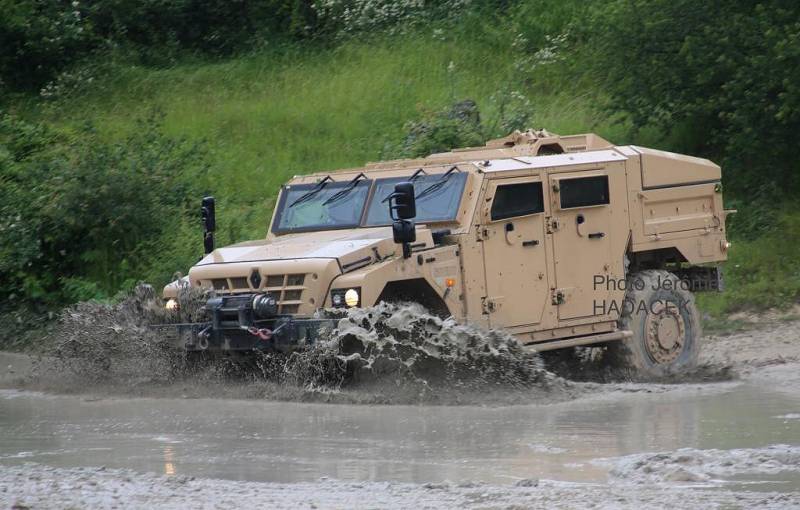
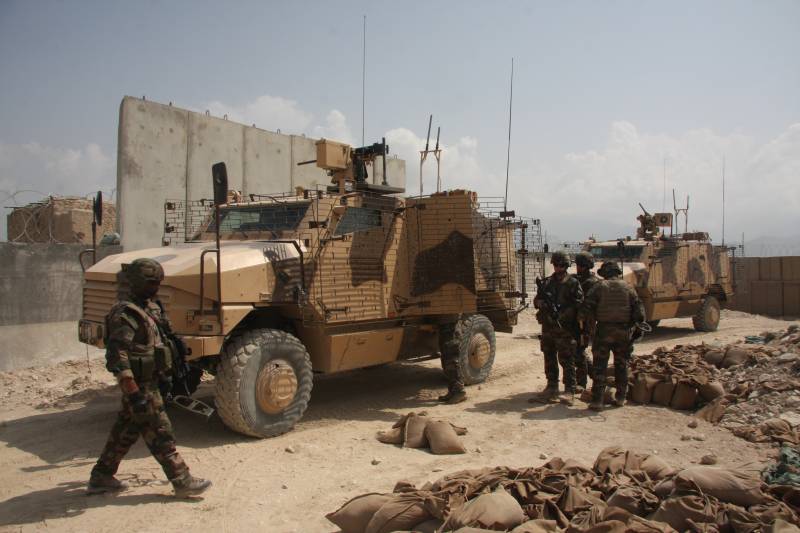
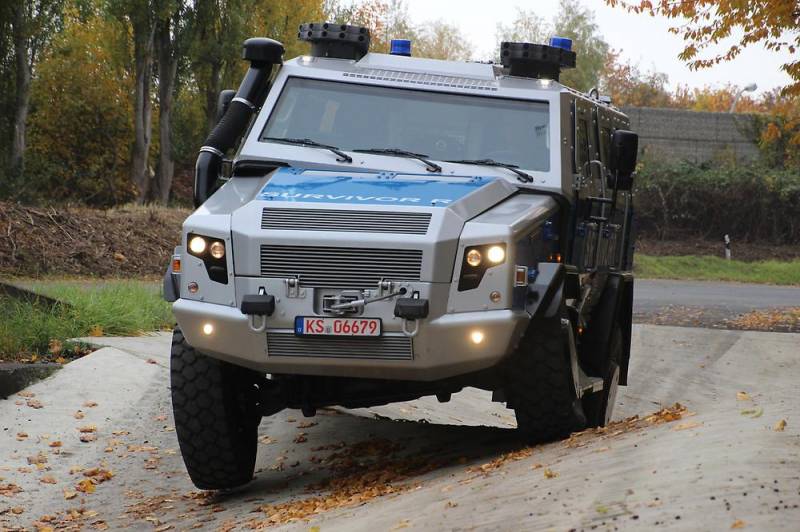
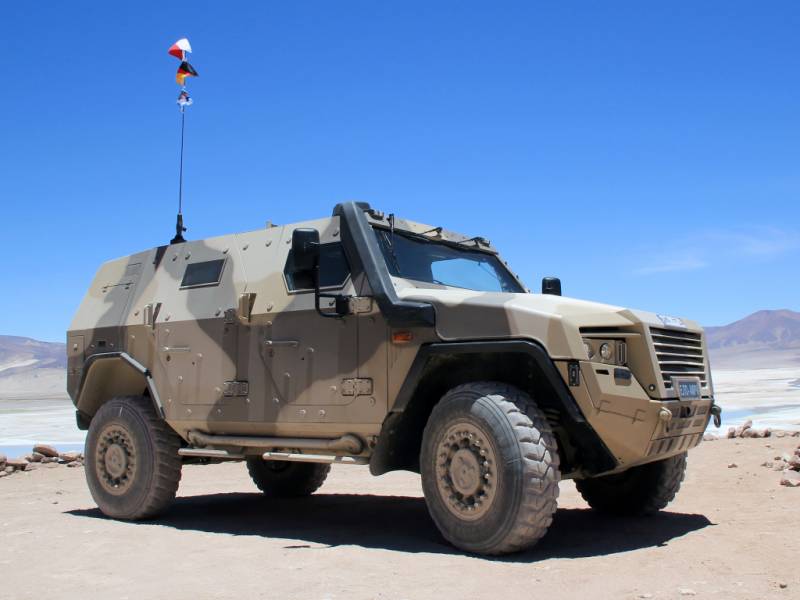
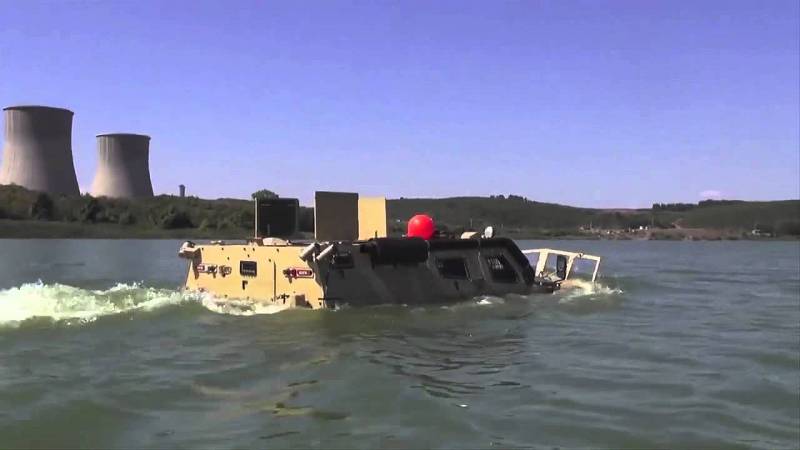
Information